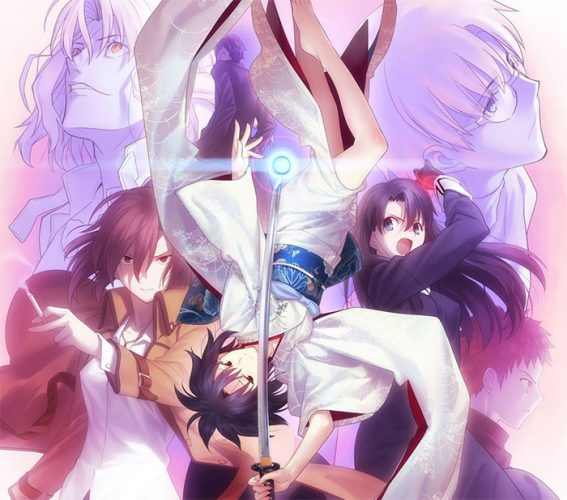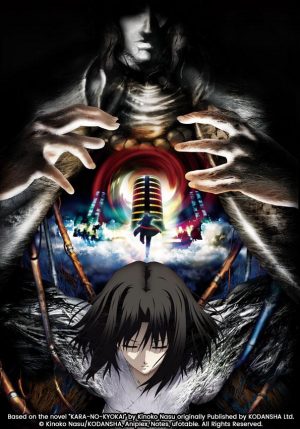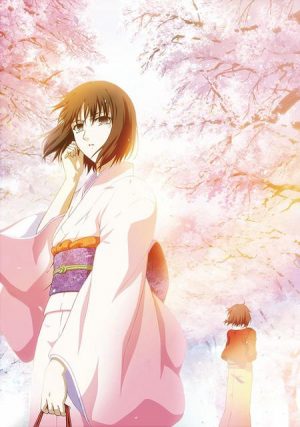
Kara no Kyoukai (The Garden of Sinners) was a novel series adapted into 7 core movies. In addition to these films, each movie had a new director whose style influenced their respective portion. While visual techniques and stories would change, the central tenants would not. Deeply imbedded in these films are values encircled by two religions: Taoism and Buddhism.
With a series steeped in Eastern influence, it’s no surprise that its imagery will borrow from its background, and in Overlooking View, the “pilot movie” for the series, the director Ei Aoki is tasked with giving us a brief glimpse into the garden of sin.
The Metamorphosis and Dream: the Butterfly
Depending on the culture, the connotation of a subject can vary. The butterfly, however, does carry a universal idea. Its metamorphosis creates a visible parallel with change, rebirth, and renewal. The stages of egg, larva, pupa, and butterfly can illustrate the inner workings of a character’s journey.
Within East Asia, the butterfly ties into philosophy. Chuang Tzu (aka Zhuang Zhou/ Zhuangzi) is a Chinese philosopher, composer, and social critic. In one of his most renowned writings, he muses about a dream in which he could not tell if he was a man dreaming he was a butterfly or a butterfly dreaming he was a man. This idea emerges in Kara no Kyoukai--the subjectivity of reality, or the problem of using one’s senses to determine reality when human senses are flawed.
In the opening sequence of Overlooking View, the Butterfly Dream is reproduced. The scene is initially jarring, emerging after a woman walks towards a ledge. Each action of the butterfly is met with a transition into white: one wing, eyes of the butterfly, butterfly appearing to “fly”, establishing shot of butterfly chasing the dragonfly (no distance change), a burning of the dream sequence, overlooking view of the butterfly, butterfly descending, a shot of the wings with ripples of water, a close up of water, the death of the butterfly, and an overlooking view of a suicide.
The transition from death of the butterfly to death of the woman creates a visible connection. The following scene is shot from above (overlooking view) as Shiki suddenly awakens, further blurring the lines between dream and reality.
Does a Butterfly Float or Fly?
This is a question of perspective, one the film answers through the musings of its characters. The difference between the two is simple: distance traveled by one’s intention. To be the agent of one’s flying means one has control over one’s destination. Floating, on the other hand, does not create intentional distance (distance at the will of the user). One can float in water and the waves can carry oneself, but one wouldn’t call that swimming. One can float in the air and be subject to the winds, but one wouldn’t call that flying. Intentions and distance matter.
While this question seems strange to ponder, it has direct parallels to the movie. The main antagonist of this film is a character who gains a “second body,” an astral projection that she states“abandoned her.” Through this second body, she can see the world from above. Her former bedridden body was a prison, unable to move and unable to see. She gains new sight and new form, but the tragedy is nothing’s really changed. She’s stuck to haunt the same scenery she burned into her memory. It’s no surprise then that the movie compares her to the butterfly, the same one that fell to its death.
Death and the Butterfly: Cultural Lore
The Butterfly Lovers is a major Chinese folktale that has influenced Asian culture and media. The story is about Zhu Yingtai, the daughter of a wealthy family who disguises herself as a man to pursue academics, and Liang Shanbo, a scholar with whom she falls in love.
These two meet through scholarly pursuits, Zhu (in disguise) falls in love with Liang, but is later betrothed to to another man by her parents. Before they part, Zhu hints to Liang about her identity and asks Liang to visit in the future. Later Liang learns that Zhu is a woman, and their love blossoms into a vow to not part even in death. However, they are separated by Zhu’s betrothed, and as a result, Liang dies of heartbreak. On the day of the marriage, a storm allows Zhu to break away. She visits Liang’s grave, and in despair asks for the grave to open up. At her request, the earth opens, and she tosses herself into the grave. From the earth emerges their spirits as two butterflies.
From this story, the butterfly gains an association with death. In particular, the appearance of a butterfly indicates an area where spirits reside. Both the spiritual nature of the butterfly and Zhu’s suicide are relevant in Overlooking View. As we later learn, there is an implication that the dragonfly is the male protagonist of the film (Kokuto), the man whom the antagonist pursues in a dream. Her monologue in the hospital reveals that he was the only man that had recognized her existence--she is forgotten even by the family she once remembered. She seeks an end to her loneliness...
...But her love interest is “betrothed” to someone else, his heart is elsewhere. Where she begins is where she ends, but the context of her “second jump” neatly ties the story into a circle. The second time she jumps to her death, the movie asks an important question, “did she fall or did she fly?” Now that you’ve seen the movie from an “overlooking view,” your answer is all based on your perspective.
Final Thoughts

I’m particularly fond of movies, and Kara no Kyoukai holds a really special place in my heart. While Taoist and Buddhist themes might be confusing to viewers, I find that understanding them has really helped my appreciation of Asian films. If there is interest in more articles of this nature or if you found this article insightful, do let me know in the comments! I’d love to continue this in the future!



